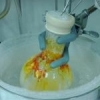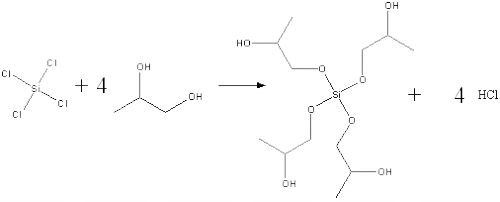-
Posts
17 -
Joined
-
Last visited
Content Type
Profiles
Forums
Events
Everything posted by Caffeinated Chemist
-

My first publication!
Caffeinated Chemist replied to Caffeinated Chemist's topic in Organic Chemistry
I think I understand what you all are getting at; that the number of sources can vary and not to let a specific number have undue influence on my paper. I guess what I was looking for was whether or not a smaller references section would still look like I had done the appropriate amount of background research and, as CharonY pointed out, cross-referencing of my results and discussion section. I've been searching literature all of today and have happily run across a few papers cited by some of my references which also support my own discoveries. I think that citing more than one source when making a claim could only help bolster my research and expand my references section. I'm not sure it's a necessity, but I don't think it could hurt either. -

My first publication!
Caffeinated Chemist replied to Caffeinated Chemist's topic in Organic Chemistry
I did not. I may have used more sources if I did not jump in with a group who has been researching this topic for a long time, but most of my questions were answered by simply asking around. The 18 sources are primarily used for justifying the research and background on the problem. -
My question is on the references section. Are 18 sources enough for a 5,500 word paper? I feel that my research is thorough and my knowledge on the subject is well rounded with these sources, but as I'm now looking at a colleague's paper, which my research built on, I see that he included 32 sources in his references section. How many references do you generally include in your publications? Thanks!
-
I've synthesized a handful of polyurethanes for my PI and run these samples through our TGA to determine the temperature at which the polymer is 90% of its original weight. My PI has now asked me to type up a summary of my findings and I'm not sure what to say about the 90% weight data. What is the significance of the temperature at which a polymer is 90% of its original weight? Thanks very much!
-

Resorcinol and sodium hydride
Caffeinated Chemist replied to Caffeinated Chemist's topic in Organic Chemistry
Thank you very much! -
I am synthesizing a phenyl ether from an alkyl resorcinol and primary alcohol, however my mentor has suggested a 2-step method that I don't fully understand. I was hoping someone could help me understand the purpose of all the reactants so that I can establish a mechanism before actually trying the reaction. I understand the first step of the reaction. It involves activating a primary alcohol by reacting it with sulfonyl chloride. I already have the mechanism, method, and isolation confidently written out. For the second step, my mentor has suggested taking the alkyl resorcinol and treating it with sodium hydride in a polar aprotic solvent before adding the tosylated alcohol from the first step. Embarrassingly, I cannot say for sure what treating the resorcinol with sodium hydride is supposed to accomplish before addition of the tosylated enolate (Ph-O-+Na?). Can someone please explain to me what this would do? Something that would be even more helpful is if you have a copy of, or link to, a paper in which a similar reaction is carried out. I really appreciate your time! Thank you for any help you can give.
-

Neutralize HCl to stop self-polymeration
Caffeinated Chemist replied to Caffeinated Chemist's topic in Organic Chemistry
I've been looking around online and I found some very similar advice here: http://www.thieme-chemistry.com/fileadmin/Thieme/HW-100/pdf/november/v04-0371-dao.pdf In section 4.4.17.1.1 they say that imidazole or triethylamine may be able to neutralize HCl formed during the reaction of an alcohol and chlorosilane, though in their example only one mole equivalent is formed as opposed to my reactions four moles. Maybe I will do a hybrid of this and try adding the SiCl4 to a much larger volume of imidazole then add that dropwise to the diol and see if the imidazole can't sop up the HCl before it ruins my compound. Thanks for the advice! I'll let you know how it goes! -
I am trying to make a compound. The problem is that I can't keep it from self-polymerizing because a byproduct of the synthesis is concentrated HCl (see below). I ran this rxn yesterday by adding SiCl4 dropwise to the diol under N2at 0oC and it still polymerized. Does anyone have a good suggestion for a solvent or a neutralizing agent to put in the RB to preserve my desired product? Note: It cannot be aqueous because the SiCl4 reacts VERY violently with water. Thanks for your help!
-

What is the purpose of Sufentanil (A drug)?
Caffeinated Chemist replied to jakebarrington's topic in Organic Chemistry
Just because a substance is potent doesn't mean it is dangerous. It just means that it has a lower threshold of effect. If anything, I would think it would be safer than morphine because less is needed for the same effect. -
I am trying to remember something I learned in my structural spectroscopy class but the details are fuzzy. I seem to remember that if water is present in a sample of an alcohol or carboxylic acid, the integration of any OH peak does not actually reflect the number of hydrogens present. Something about, the OH peak of the compound of interest is closer to the water OH peak than it should be, and the integration of the peak is greater than the actual number of protons. Does this ring a bell to anyone? I ask because I have a spectra of an alcohol and the OH peak is integrating at almost double what it should be. Maybe I am just desperate for my product. Haha! Any advice would be greatly appreciated. Thank you! compound nmr.bmp
-
Thanks guys! I went ahead and tried using the finely ground celite on top of the fritted glass funnel and everything came out alright. I think the trick was wetting it with my solvent before pouring it on top of the funnel. That way there was some cohesion to keep it from being pulled through during filtration. I appreciate all your advice.
-
An experiment that I am replicating calls for filtering of the product through a pad of Celite 545 but all I have is finely ground Celite 545 powder. Would it be enough to just filter the liquid product through a fritted glass Buchner funnel or should I put a layer of the Celite 545 on top of the filter as well? Basically, what is the role of Celite 545 in this experiment and do I have to use it? Because it is so finely ground I am worried about pulling it into my filtrate. Thanks for your help!
-
Common contaminants around 1.2ppm are t-butyl methyl ether - CCH3 - 1.19 (s) diethyl ether - CH3 - 1.21 (t) ethanol - CH3 - 1.25 (t) silicone grease - CH2 - 1.26 (br s) t-butyl alcohol - CH3 - 1.28 (s) H2O - 1.56 (s) (Taken from J. Org. Chem., Vol. 62, No. 21, 1997 - This is a must have article for anyone who regularly does NMR!! Look it up!) From my own experience I'm inclined to think it is water as it isn't showing up in your 13C and it is such a large peak. I have seen water contamination as far off as 1.2ppm and it is always the same enormous sharp peak. I had a similar problem just recently and discovered that the CDCl3 had gone bad and it had turned to water because people were refluxing their pipette in the solution and essentially aerating the solvent (big no-no). Run a 1H NMR on the CDCl3 to make sure the solvent is okay then, if your product is stable enough, try sticking it on an oil pump or rotavap. That should get off whatever it is if it isn't in the CDCl3 Good luck! If possible, upload a picture of your 1H NMR and 13C NMR. That would be a big help!
-

Glycol modified siloxane
Caffeinated Chemist replied to Caffeinated Chemist's topic in Organic Chemistry
I might just try that. If it works it might even be worth trying to stir the bulk product in an open container to get rid of the smell. It is seriously like a punch in the face. Agreed. It must be some contaminant. -

Synthesis of 4-Iodo-3-nitrobenzamide
Caffeinated Chemist replied to ChemistTree's topic in Organic Chemistry
https://docs.google.com/viewer?url=www.google.com/patents/US5464871.pdf If you look at page 13 they outline how to synthesize 4-iodo-3-nitrobenzamide from a starting material of 4-iodo-3-nitrobenzoic acid. I looked up prices and it's pretty expensive. Maybe you could synthesize your own 4-iodo-3-nitrobenzoic acid? I wish I could help more. Good luck! -
I have synthesized a glycol modified silane from the starting materials of 1,2-propane diol and methyl trimethoxysilane. The structure of the product can be found below. The process involves removal of methanol by distillation under an inert atmosphere at a high temperature (140 degrees C for 16 hours). My question involves the following. My product smells like old gym socks marinated in rubbing alcohol then left to ferment under a leaking sink for a year. I have made dozens of variations on this compound and none of them smell like this. The 1H and 13C NMR on this compound look clean. Can anyone suggest why my compound smells so terrible? My current theorys include contamination by an oxidized version of the product and/or degradation of the product into an ether. What do you all think?



